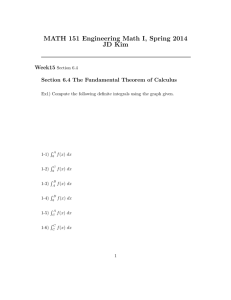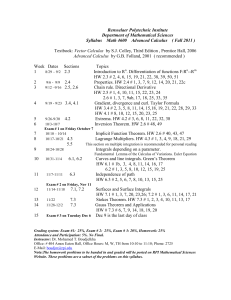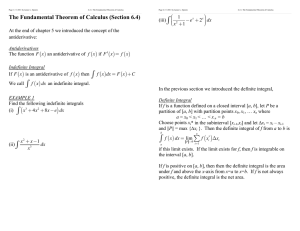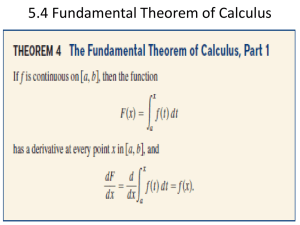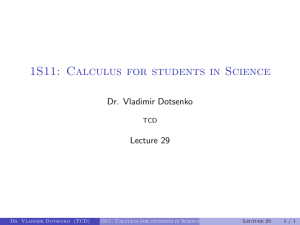ò ( ) ( )
advertisement
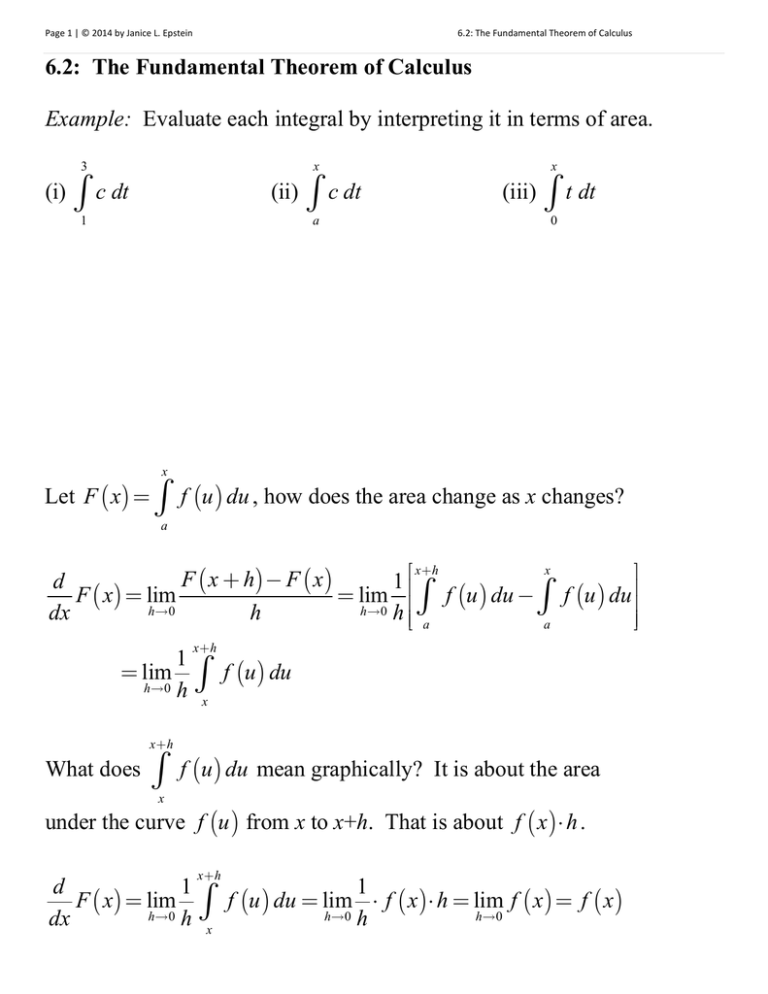
Page 1 | © 2014 by Janice L. Epstein 6.2: The Fundamental Theorem of Calculus 6.2: The Fundamental Theorem of Calculus Example: Evaluate each integral by interpreting it in terms of area. (i) x x 3 ò c dt (ii) ò c dt a 1 (iii) ò t dt 0 x Let F ( x) = ò f (u ) du , how does the area change as x changes? a x+h x ù F ( x + h) - F ( x ) 1 éê d = lim ê ò f (u ) du - ò f (u ) du úú F ( x) = lim h 0 h 0 h dx h êë a úû a 1 = lim h 0 h x+h ò f (u ) du x x+h What does ò f (u ) du mean graphically? It is about the area x under the curve f (u ) from x to x+h. That is about f ( x)⋅ h . d 1 F ( x) = lim h 0 h dx x+h ò x 1 f (u ) du = lim ⋅ f ( x)⋅ h = lim f ( x) = f ( x) h 0 h h 0 Page 2 | © 2014 by Janice L. Epstein 6.2: The Fundamental Theorem of Calculus THE FUNDAMENTAL THEOREM OF CALCULUS, PART 1 If f is continuous on [ a, b ], then the function F defined by x F ( x) = ò f (u ) du , a £ x£b a is continuous on [ a, b ], differentiable on (a, b) and F ¢( x) = f ( x) . So F ( x) is an antiderivative of f ( x). Example: Find the derivative of the given functions x x 2 (i) g ( x) = ò t 3 + 1 dt (ii) y = ò 2 dt t 1 + -1 -1 THE FUNDAMENTAL THEOREM OF CALCULUS, PART 2 b If f is continuous on [ a, b ], then ò a where F is any antiderivative of f. f ( x) dx = F (b) - F (a ) = F ( x) a b Page 3 | © 2014 by Janice L. Epstein 6.2: The Fundamental Theorem of Calculus Example: Evaluate the following definite integrals 2 (i) ò (w 3 0 -1) dw 2 p/2 0 (ii) ò -2 x 2 -1 dx (iii) ò (cos q + 2sin q ) d q 0 Page 4 | © 2014 by Janice L. Epstein 6.2: The Fundamental Theorem of Calculus If the general antiderivative of f ( x) is F ( x) + C , this can be written as x F ( x) + C = C + ò f (u ) du = ò f ( x ) dx a Where f x dx is called an indefinite integral. Example: Compute the following indefinite integrals (i) (iv) x 3/ 5 4 x x 5 / 3 dx dx 2 4x (ii) cos dx 5 5 (v) dx 2 1 x (iii) 2e x / 4 dx

